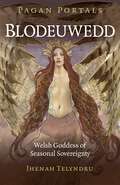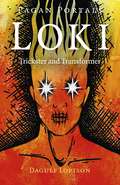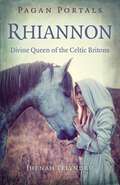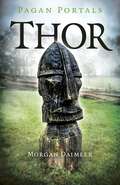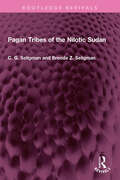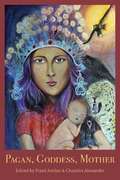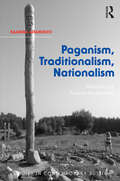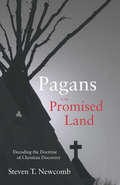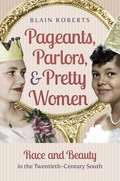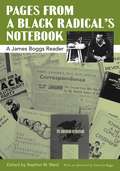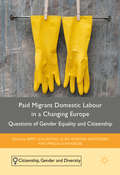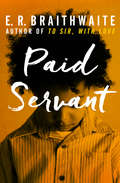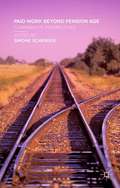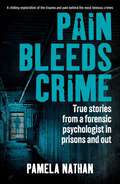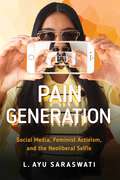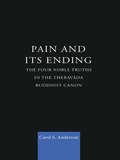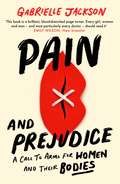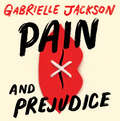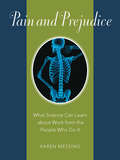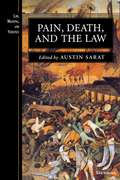- Table View
- List View
Pagan Portals - Blodeuwedd: Welsh Goddess of Seasonal Sovereignty
by Jhenah TelyndruLike a gathering of flowers from hedge and field, or a cloak made of owl feathers, Blodeuwedd is a figure of great complexity. She is both Flower Maiden and Owl of Wisdom… unfaithful wife and representative of Sovereignty… fallen woman and feminist heroine… medieval cautionary tale and reclaimed divinity. Yet, for all of these seeming inconstancies, the key to understanding Blodeuwedd is being able to see her as a whole. Bringing together strands of Celtic lore, Welsh literature, British folk practice, and modern devotion, Celticist Jhenah Telyndru weaves a solid foundation from which scholars and seekers alike can come into deeper relationship with this oft-misunderstood figure. Ultimately, this journey to reclaim Blodeuwedd&’s identity - a Sovereignty Goddess who ensured the cycle of the seasons by choosing, in turn, to partner with the Solar Hero of Summer and the Otherworldly Champion of Winter - reveals a transformational mythic pathway that can also guide us in the reclamation of our own sovereignty.
Pagan Portals - Loki: Trickster and Transformer
by Dagulf LoptsonLoki Laufeyjarson is the famous trickster of Norse Mythology, who brings its pages to life with conflict, humor, and excitement. Far from being just a villain or a prankster, Loki is a god who brings necessary change into the world, transcends boundaries, and shines light on hidden truth. In this book, you will be introduced to Loki and the many masks he wears: whether he appears as the bringer of enlightenment, the traveling companion of the gods, or the ender of worlds. This is also an accessible guide to building a devotional practice with the trickster, where you will learn new ways to honor this often misunderstood deity. Open the door to Loki's mysteries, and prepare to laugh, be challenged, and potentially change your life.'Pagan Portals - Loki is a bold and necessary look at the Trickster God of the Norse. The author deftly weaves together academic material and personal experience to give the reader a guide not only to better understand this often maligned deity but also to connect directly to him. An unflinching appraisal that offers a great deal of insight into Loki.' Morgan Daimler author of Pagan Portals - Odin and Pagan Portals - Thor.
Pagan Portals - Rhiannon: Divine Queen of the Celtic Britons
by Jhenah TelyndruTo truly know Rhiannon, we must excavate the layers of her myth, decode the meaning of her symbols, and seek to restore the significance of her very name. Although she has a mythology around her, and has many modern-day devotees, nowhere in ancient lore has she been identified as a Goddess. We have no known cult centers or devotional altars dedicated to Rhiannon. How then do we approach this revered Lady? How can we best know her as Goddess? We need but call to her, and ask for what we need. Be it her bag of plenty, the soul-healing song of her birds, or the empowerment of the sovereignty she holds, when you call to Rhiannon, the Divine Queen of the Britons, know that she will stop… and know that she will answer your call.
Pagan Portals - Seeking the Primal Goddess
by Melusine DracoUsing archaeology, archaeo-mythology and mitochondrial DNA we can chart the mass migrations of people throughout the ancient world and follow the footsteps of the beliefs of Old Europe. But if the concept of the Old Goddess is at odds with current popular thinking, how will we feel if we discover that the Great Mother of contemporary Paganism bears no similarity to the primal Great Goddess of the Old European world? Is there a &‘magico-spiritual&’ gene that could be traced back to those distant ancestors who actually worshipped the forebears of the various deities to whom we claim allegiance today? Are there time-honoured things about us all as individuals that are bred deep in the bone? Are we what our roots (our DNA) claim us to be? Perhaps, even though we are now scattered all over the globe, we cannot escape those ancient racial memories of where we originally came from.
Pagan Portals - Thor
by Morgan DaimlerThor is an immensely popular God but also one of contradictions, whose complexity is sometimes underrated. Often depicted as oafish, he was clever enough to outwit the dwarf Alviss (All-wise). A god of storms and thunder, he brought fertility and blessed brides at weddings and although a defender of civilization and order, he usually travelled with a trickster deity. Pagan Portals - Thor is an introductory book that examines both history and mythology, untangling older beliefs from modern pop-culture.
Pagan Tribes of the Nilotic Sudan (Routledge Revivals)
by C. G. Seligman Brenda Z. SeligmanFirst published in 1932, Pagan Tribes of the Nilotic Sudan is a general conspectus of the people, traditions, culture, and ways of thought in southern Sudan. The authors give their view of the remote racial origins of the people with whom their studies are concerned and then of the great sub-racial units whom they class as ‘dolichocephals’ and ‘mesaticephals’ respectively. The former comprise, first, the Nilotes – Shilluk, Nuer and Dinka, who live and move and have their being in an atmosphere of cattle, and who, it is thought, had their cradleland somewhere east of the Great Lakes – and, second, the Nilo-Hamites, such as the true Bari, various Lotuko-speaking tribes, etc. The mesaticephals consist of the Fung-Nuba peoples on the one hand and, on the other, the South-Western group of whom Azande are the best known. Exceptional interest is attached to the research conducted among the Bari. The social organization of this tribe is complex and curious, particularly their beliefs regarding rain-stones, rainmakers and clouds. The language used is a reflection of its era and no offence is meant by the Publishers to any reader by this republication. This book will be of interest to students of history, anthropology, ethnography, and ethnic studies.
Pagan, Goddess, Mother
by Nané Jordan;Chandra AlexandreThis anthology calls Pagan and Goddess mothering into focus by highlighting philosophies and experiences of mothers in these spiritual movements and traditions. Pagan and Goddess spirituality are distinct, yet overlapping and diverse communities, with much to say about deity as mother, and about human mothers in relationship to deity. Authors share creative voices, stories, and scholarship from the forefront of Pagan- and Goddess- centered home, in which divine mothers, Goddesses, diverse female embodiments, and generative life cycles are honoured as sacred. Authors inquire into how their spirituality impacts the perceived value and experiences of mothers themselves, while generating new ways of imagining and enacting motherhood in spiritual and daily life. Pagan, Goddess, Mother opens spaces for dialogue in areas such as how Pagan- and Goddess- centred mothers engage in, and are impacted by, their spiritual leadership through practices of ceremony, ritual, magic, and priestessing. Authors consider mothers' lived connections with their children, family life, and themselves, through nature, the Earth, and mothering as a spiritual practice. Chapters reflect upon the ways that Pagan- and Goddess- identified mothers creatively navigate daily interactions with dominant religions, the public sphere, community leadership, and activism facing the challenges of such while forging new pathways for spirited well being in mothering and family life.
Paganism, Traditionalism, Nationalism: Narratives of Russian Rodnoverie (Studies in Contemporary Russia)
by Kaarina AitamurtoRodnoverie was one of the first new religious movements to emerge following the collapse of the Soviet Union, its development providing an important lens through which to view changes in post-Soviet religious and political life. Rodnovers view social and political issues as inseparably linked to their religiosity but do not reflect the liberal values dominant among Western Pagans. Indeed, among the conservative and nationalist movements often associated with Rodnoverie in Russia, traditional anti-Western and anti-Semitic rhetoric has recently been overshadowed by anti-Islam and anti-migrant tendencies. Providing a fascinating overview of the history, organisations, adherents, beliefs and practices of Rodnoverie this book presents several different narratives; as a revival of the native Russian or Slavic religion, as a nature religion and as an alternative to modern values and lifestyles. Drawing upon primary sources, documents and books this analysis is supplemented with extensive fieldwork carried out among Rodnoverie communities in Russia and will be of interest to scholars of post-Soviet society, new religious movements and contemporary Paganism in general.
Pagans in the Promised Land: Decoding the Doctrine of Christian Discovery
by Steven T. NewcombPagans in the Promised Land provides a unique, well-researched challenge to U.S. federal Indian law and policy. It attacks the presumption that American Indian nations are legitimately subject to the plenary power of the United States. Steve Newcomb puts forth a startling theory that U.S. federal Indian law and policy are premised on Old Testament narratives of the chosen people and the promised land, as exemplified in the 1823 Supreme Court ruling Johnson v. McIntosh, that the first "Christian people" to "discover" lands inhabited by "natives, who were heathens," have an ultimate title to and dominion over these lands and peoples. This imporant addition to legal scholarship asserts there is no separation of church and state in the United States, so long as U.S. federal Indian law and policy are premised on the ancient religious distinctions between "Christians" and "heathens."
Pageants, Parlors, and Pretty Women
by Blain RobertsFrom the South's pageant queens to the importance of beauty parlors to African American communities, it is easy to see the ways beauty is enmeshed in southern culture. But as Blain Roberts shows in this incisive work, the pursuit of beauty in the South was linked to the tumultuous racial divides of the region, where the Jim Crow-era cosmetics industry came of age selling the idea of makeup that emphasized whiteness, and where, in the 1950s and 1960s, black-owned beauty shops served as crucial sites of resistance for civil rights activists. In these times of strained relations in the South, beauty became a signifier of power and affluence while it reinforced racial strife. Roberts examines a range of beauty products, practices, and rituals--cosmetics, hairdressing, clothing, and beauty contests--in settings that range from tobacco farms of the Great Depression to 1950s and 1960s college campuses. In so doing, she uncovers the role of female beauty in the economic and cultural modernization of the South. By showing how battles over beauty came to a head during the civil rights movement, Roberts sheds new light on the tactics southerners used to resist and achieve desegregation.
Pages from a Black Radical's Notebook: A James Boggs Reader
by Grace Lee Boggs Stephen M. Ward James BoggsBorn in the rural American south, James Boggs lived nearly his entire adult life in Detroit and worked as a factory worker for twenty-eight years while immersing himself in the political struggles of the industrial urban north. During and after the years he spent in the auto industry, Boggs wrote two books, co-authored two others, and penned dozens of essays, pamphlets, reviews, manifestos, and newspaper columns to become known as a pioneering revolutionary theorist and community organizer. In Pages from a Black Radical's Notebook: A James Boggs Reader, editor Stephen M. Ward collects a diverse sampling of pieces by Boggs, spanning the entire length of his career from the 1950s to the early 1990s. Pages from a Black Radical's Notebook is arranged in four chronological parts that document Boggs's activism and writing. Part 1 presents columns from Correspondence newspaper written during the 1950s and early 1960s. Part 2 presents the complete text of Boggs's first book, The American Revolution: Pages from a Negro Worker's Notebook, his most widely known work. In part 3, "Black Power--Promise, Pitfalls, and Legacies," Ward collects essays, pamphlets, and speeches that reflect Boggs's participation in and analysis of the origins, growth, and demise of the Black Power movement. Part 4 comprises pieces written in the last decade of Boggs's life, during the 1980s through the early 1990s. An introduction by Ward provides a detailed overview of Boggs's life and career, and an afterword by Grace Lee Boggs, James Boggs's wife and political partner, concludes this volume. Pages from a Black Radical's Notebook documents Boggs's personal trajectory of political engagement and offers a unique perspective on radical social movements and the African American struggle for civil rights in the post-World War II years. Readers interested in political and ideological struggles of the twentieth century will find Pages from a Black Radical's Notebook to be fascinating reading.
Paid Migrant Domestic Labour in a Changing Europe
by Berit Gullikstad Guro Korsnes Korsnes Kristensen Priscilla RingroseThis book analyses the changing face of work, gender equality and citizenship in Europe. Drawing on in-depth research conducted in nine different countries, it focuses on the discourses, social relations and political processes that surround paid domestic labour. In doing so, it rethinks the vital relationship between this kind of employment, the formal and informal citizenship of migrant workers and their employers, and the cultural and political value of gender equality. Approaching these as fluid, complex and interrelated phenomena that change according to local context, it will appeal to sociologists, political scientists, geographers, anthropologists and gender studies scholars.
Paid Servant
by E. R. BraithwaiteE. R. Braithwaite, the acclaimed author of To Sir, With Love, poignantly recounts his time as a social worker dedicated to London&’s abandoned minority children Despite his Cambridge education and a sterling record with the British Royal Air Force during World War II, E. R. Braithwaite, a black man, was unable to find employment as an engineer in post-war London. Instead he accepted a position as a teacher in a tough East End school and wrote of his experiences in his classic bestseller To Sir, With Love. Nine years later, Braithwaite once again found himself assuming an unfamiliar professional role as a social worker charged with finding homes for London&’s orphaned, abused, or abandoned &“coloured&” children. While he lacked formal training, Braithwaite possessed qualities essential for the job: compassion, determination, and a deep, abiding understanding and love for the helpless, lost, and disregarded. In Paid Servant, E. R. Braithwaite shares his experiences in London&’s Department of Child Welfare, focusing on the case of his four-year-old client Roddy, a bright, handsome mulatto boy who was rejected for adoption by both black and white families because he was not their &“own kind.&” Everywhere he turned, Braithwaite encountered racial prejudice. But he was willing to fight for what he believed in, and he believed in Roddy. Writing with great power, warmth, and a deep belief in human dignity and worth, Braithwaite offers a heartbreaking yet hopeful look into a society&’s attempt to care for its youngest, most vulnerable citizens.
Paid Work Beyond Pension Age: Comparative Perspectives
by Simone SchergerIn many countries, the number of people working beyond pension age is increasing. This volume investigates this trend in seven different countries, examining the contexts of this development and the consequences of the shifting relationship between work and retirement.
Pain Bleeds Crime: Stories from a forensic psychologist in prisons and out.
by Pamela Nathan"The most dangerous people I met weren&’t monsters. They were broken children wearing adult faces." ________________________________________Pamela Nathan, clinical and forensic psychologist and psychoanalytic psychotherapist, uncovers the inner worlds of society&’s most dangerous and broken—whether behind bars or hidden in plain sight. In Pain Bleeds Crime, she shares twenty-three gripping true stories from her decades working in maximum-security prisons, courts, and forensic hospitals. The crimes are shocking—murder, rape, paedophilia, assault, fetishism, bestiality, and more—but what lies beneath is often even more confronting. Each offender, whether male, female or transgender, reveals a hidden world shaped by trauma, pain, and silence. Pamela enters these inner worlds to feel and then to have revealed the internal crime scenes, to see what made them break—mentally, emotionally, morally. These aren&’t excuses. They&’re revelations. You&’ll come face-to-face with people whose crimes horrified the public—people who insist they&’re not violent, or that &“it just happened&”—and come face-to-face with the dark truth: the past never really goes away. With unflinching honesty and rare insight, Pamela shows how the past never really stays buried—and how behind every act of violence, there&’s a story waiting to be told. Brutally honest, deeply unsettling, and impossible to forget, Pain Bleeds Crime is a journey into the darkest parts of humanity."Mad, bad, or sad—when we listen to the story, we see the person." "A chilling exploration of the trauma and pain behind the most heinous crimes."
Pain Generation: Social Media, Feminist Activism, and the Neoliberal Selfie
by L. Ayu SaraswatiExplores the perils and promise of feminist social media activismSocial media has become the front-and-center arena for feminist activism. Responding to and enacting the political potential of pain inflicted in acts of sexual harassment, violence, and abuse, Asian American and Asian Canadian feminist icons such as rupi kaur, Margaret Cho, and Mia Matsumiya have turned to social media to share their stories with the world. But how does such activism reconcile with the platforms on which it is being cultivated, when its radical messaging is at total odds with the neoliberal logic governing social media?Pain Generation troubles this phenomenon by articulating a “neoliberal self(ie) gaze” through which these feminist activistssee and storify the self on social media as “good” neoliberal subjects who are appealing, inspiring, and entertaining. This book offers a fresh perspective on feminist activism by demonstrating how the problematic neoliberal logic governing digital spaces like Instagram and Twitter limits the possibilities of how one might use social media for feminist activism.
Pain Is Weakness Leaving the Body: A Marine's Unbecoming
by Lyle Jeremy RubinAn honest reckoning with the war on terror, masculinity, and the violence of American hegemony abroad, at home, and on the psyche, from a veteran whose convictions came undone When Lyle Jeremy Rubin first arrived at Marine Officer Candidates School, he was convinced that the &“war on terror&” was necessary to national security. He also subscribed to a strict code of manhood that military service conjured and perpetuated. Then he began to train and his worldview shattered. Honorably discharged five years later, Rubin returned to the United States with none of his beliefs, about himself or his country, intact. In Pain Is Weakness Leaving the Body, Rubin narrates his own undoing, the profound disillusionment that took hold of him on bases in the U.S. and Afghanistan. He both examines his own failings as a participant in a prescribed masculinity and the failings of American empire, examining the racialized and class hierarchies and culture of conquest that constitute the machinery of U.S. imperialism. The result is a searing analysis and the story of one man&’s personal and political conversion, told in beautiful prose by an essayist, historian, and veteran transformed.
Pain and Gain
by Brian M. Stecher Laura S. Hamilton Julie A. Marsh Scott Epstein Abby RobynThe Implementing Standards-Based Accountability (ISBA) study was designed to examine the strategies that states, districts, and schools are using to implement standards-based accountability under the No Child Left Behind Act (NCLB). This monograph presents information regarding the implementation of NCLB in California, Georgia, and Pennsylvania from 2003-2004 through 2005-2006, including the final results of the ISBA project.
Pain and Its Ending: The Four Noble Truths in the Theravada Buddhist Canon (Routledge Critical Studies in Buddhism)
by Carol AndersonDemonstrates how the four noble truths are used thorughout the Pali canon as a symbol of Buddha's enlightenment and as a doctrine within a larger network of Buddha's teachings. Their unique nature rests in their function as a proposition and as a symbol in the Theravada canon.
Pain and Prejudice: A call to arms for women and their bodies
by Gabrielle JacksonAn incredibly important and powerful look at how our culture treats the pain and suffering of women in medical and social contexts. A polemic on the state of women's health and healthcare.One in ten women worldwide have endometriosis, yet it is funded at 5% of the rate of diabetes; women are half as likely to be treated for a heart attack as men and twice as likely to die six months after discharge; over half of women who are eventually diagnosed with an autoimmune disease will be told they are hypochondriacs or have a mental illness. These are just a few of the shocking statistics explored in this book.Fourteen years after being diagnosed with endometriosis, Gabrielle Jackson couldn't believe how little had changed in the treatment and knowledge of the disease. In 2015, her personal story kick-started a worldwide investigation into the disease by the Guardian; thousands of women got in touch to tell their own stories and many more read and shared the material. What began as one issue led Jackson to explore how women - historically and through to the present day - are under-served by the systems that should keep them happy, healthy and informed about their bodies.Pain and Prejudice is a vital testament to how social taboos and medical ignorance keep women sick and in anguish. The stark reality is that women's pain is not taken as seriously as men's. Women are more likely to be disbelieved and denied treatment than men, even though women are far more likely to be suffering from chronic pain.In a potent blend of polemic and memoir, Jackson confronts the private concerns and questions women face regarding their health and medical treatment. Pain and Prejudice, finally, explains how we got here, and where we need to go next.
Pain and Prejudice: A call to arms for women and their bodies
by Gabrielle JacksonAn incredibly important and powerful look at how our culture treats the pain and suffering of women in medical and social contexts. A polemic on the state of women's health and healthcare.One in ten women worldwide have endometriosis, yet it is funded at 5% of the rate of diabetes; women are half as likely to be treated for a heart attack as men and twice as likely to die six months after discharge; over half of women who are eventually diagnosed with an autoimmune disease will be told they are hypochondriacs or have a mental illness. These are just a few of the shocking statistics explored in this book.Fourteen years after being diagnosed with endometriosis, Gabrielle Jackson couldn't believe how little had changed in the treatment and knowledge of the disease. In 2015, her personal story kick-started a worldwide investigation into the disease by the Guardian; thousands of women got in touch to tell their own stories and many more read and shared the material. What began as one issue led Jackson to explore how women - historically and through to the present day - are under-served by the systems that should keep them happy, healthy and informed about their bodies.Pain and Prejudice is a vital testament to how social taboos and medical ignorance keep women sick and in anguish. The stark reality is that women's pain is not taken as seriously as men's. Women are more likely to be disbelieved and denied treatment than men, even though women are far more likely to be suffering from chronic pain.In a potent blend of polemic and memoir, Jackson confronts the private concerns and questions women face regarding their health and medical treatment. Pain and Prejudice, finally, explains how we got here, and where we need to go next.
Pain and Prejudice: What Science Can Learn About Work From The People Who Do It
by Dr Karen MessingIn 1978, when workers at a nearby phosphate refinery learned that the ore they processed was contaminated with radioactive dust, Karen Messing, then a new professor of molecular genetics, was called in to help. Unsure of what to do with her discovery that exposure to the radiation was harming the workers and their families, Messing contacted senior colleagues but they wouldn’t help. Neither the refinery company nor the scientific community was interested in the scary results of her chromosome studies. Over the next decades Messing encountered many more cases of workers around the world—factory workers, cleaners, checkout clerks, bank tellers, food servers, nurses, teachers—suffering and in pain without any help from the very scientists and occupational health experts whose work was supposed to make their lives easier. Arguing that rules for scientific practice can make it hard to see what really makes workers sick, in Pain and Prejudice Messing tells the story of how she went from looking at test tubes to listening to workers.
Pain, Death, and the Law
by Austin SaratThis collection of essays examines the relationship between pain, death, and the law and addresses the question of how the law constructs pain and death as jurisprudential facts. The empirical focus of these essays enables the reader to delve into both the history and the theoretical complexities of the pain-death-law relationship. The combination of the theoretical and the empirical broadens the contribution this volume will undoubtedly make to debates in which the right to live or die is the core issue at hand.
